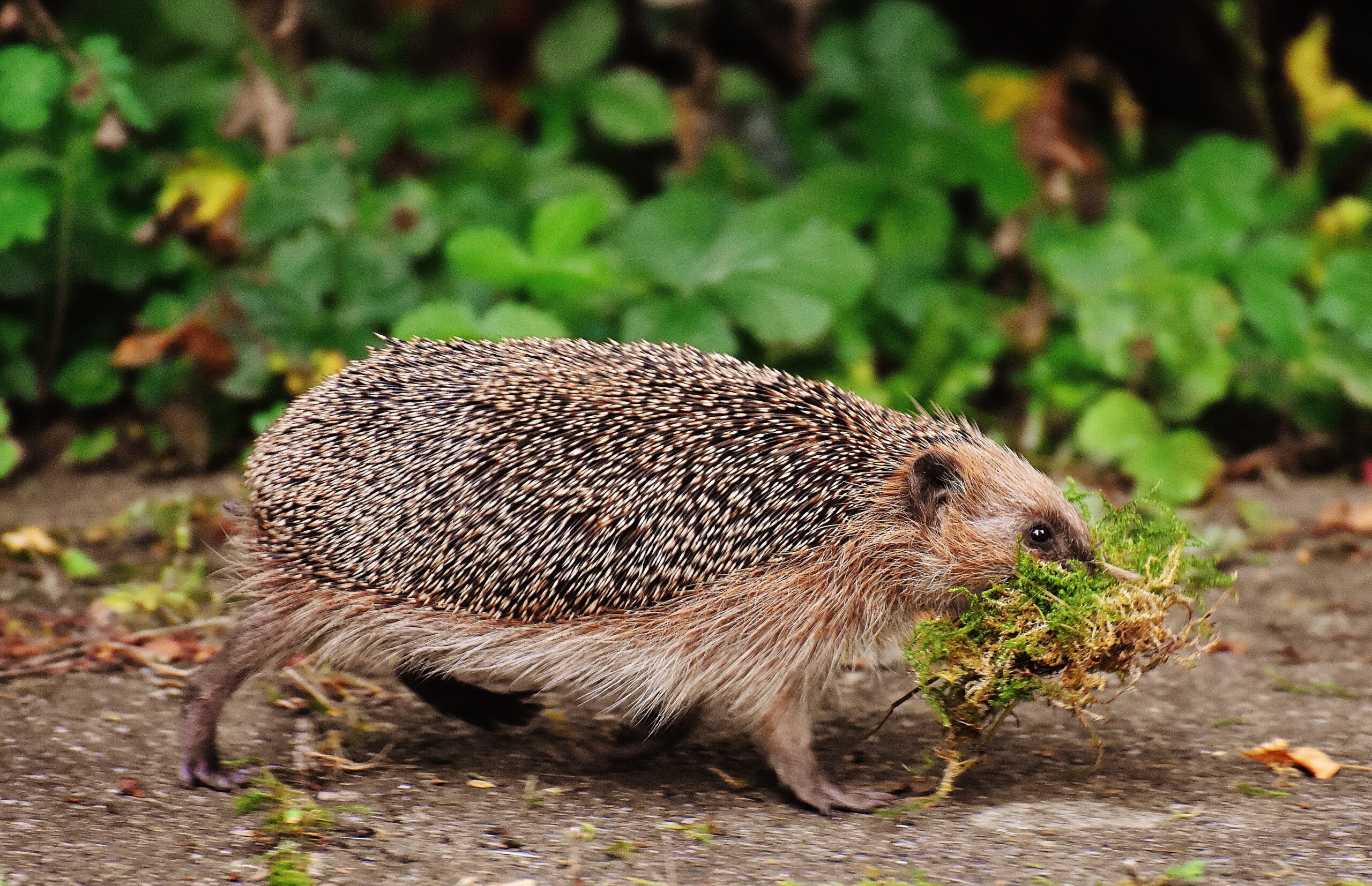
Observing without disturbing
Once your Hedgehog Dome is in place, it’s natural to want to know if hedgehogs are using it. Observation is important: it helps us understand hedgehog behavior and gives us joy in seeing wildlife return. But it must always be done in a way that keeps hedgehogs safe and undisturbed.
Signs of hedgehog activity
You don’t need to open the Dome to check. Instead, look for subtle signs nearby:
- Tracks: Small footprints (about 2–3 cm wide) in soft soil, mud, or sand.
- Droppings: Dark, cylindrical droppings containing insect remains that may shimmer, often left along paths or near feeding areas.
- Flattened grass or leaf litter: Trails where hedgehogs have regularly passed.
- Rustling at night: Listen for soft snuffling sounds when hedgehogs forage after dusk.
These are reliable indicators without needing to disturb the nest itself.
Safe monitoring methods
Wildlife cameras:
- Place a motion-activated camera outside the entrance, about 30–50 cm away.
- Angle it slightly downward to capture activity without blocking the tunnel.
- Avoid cameras with bright flashes; use infrared/night-vision models that don’t scare animals.
Feeding stations: Placing food or water dishes nearby (never inside the Dome) helps you spot regular visitors.
Do’s and Don’ts
Do:
- Watch from a distance, especially at dusk or night.
- Use cameras, sound recorders, or indirect tracking methods.
- Share your findings to raise awareness about hedgehog conservation.
Don’t:
- Open or lift the Dome to look inside.
- Shine bright lights directly at entrances.
- Leave cameras or equipment that block hedgehogs’ access.
- Try to handle or move hedgehogs unless for emergency rescue.
The golden rule
If you’re not sure whether your actions might disturb the hedgehogs, it’s best not to do it. Hedgehogs are more likely to keep using the Dome when they feel completely safe and unseen.